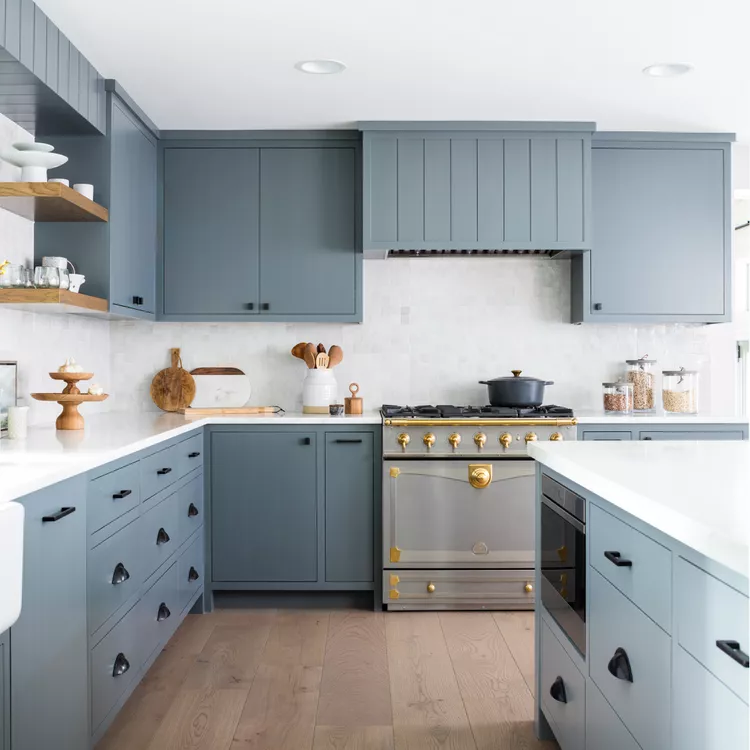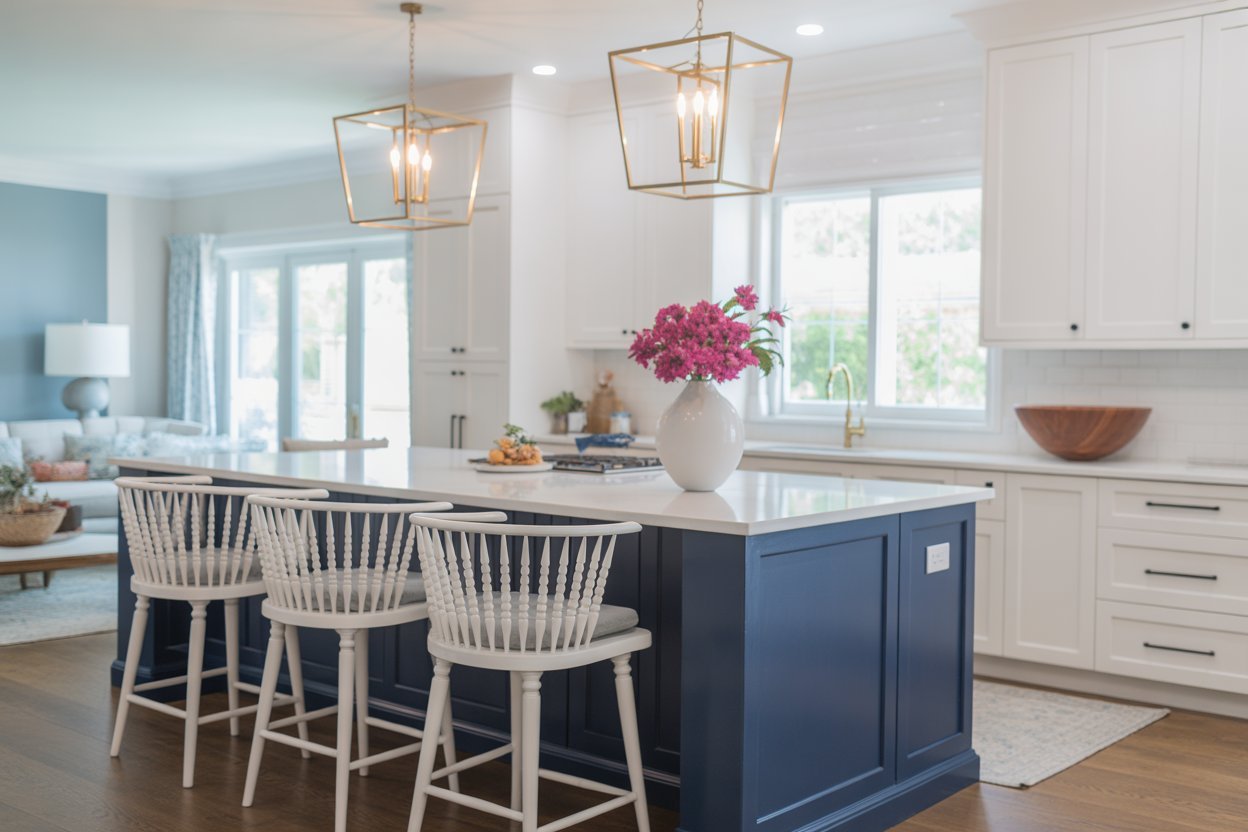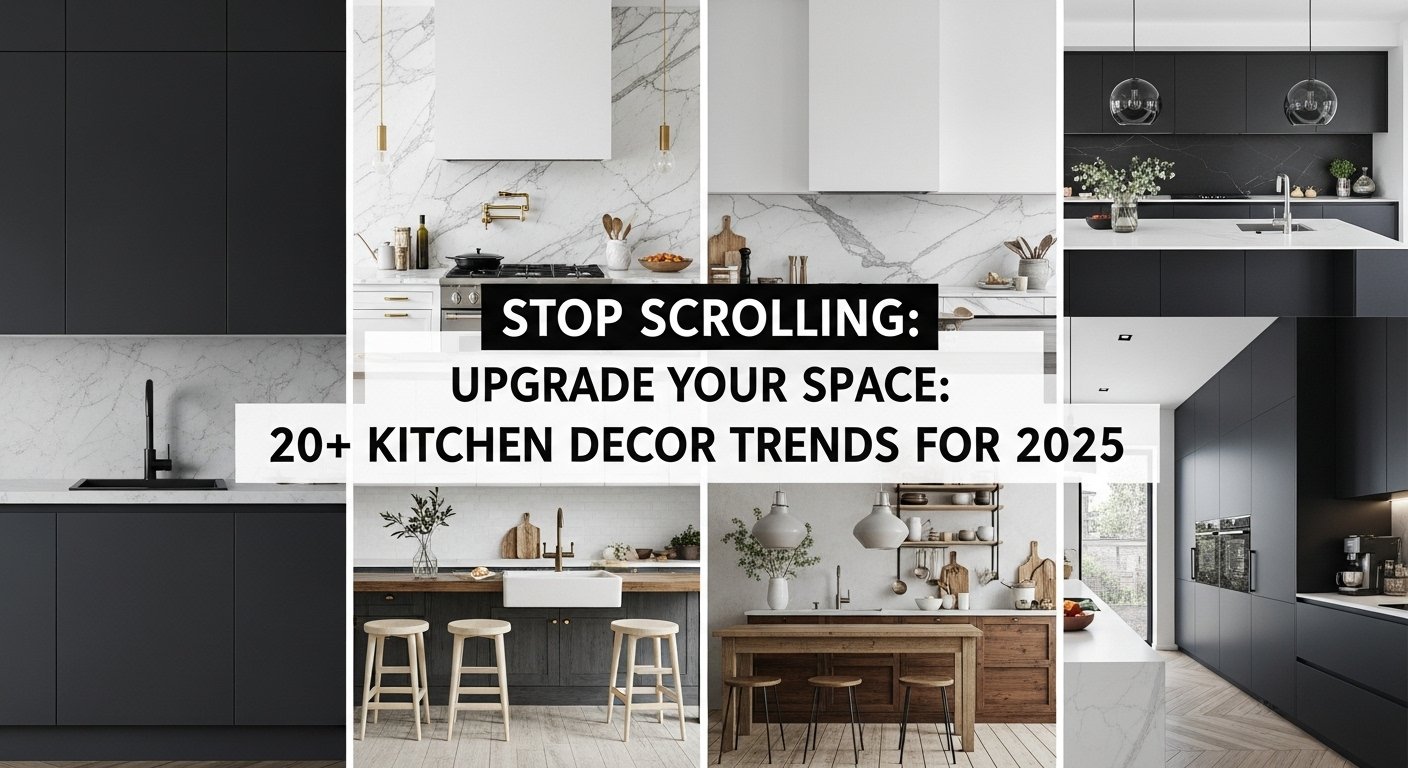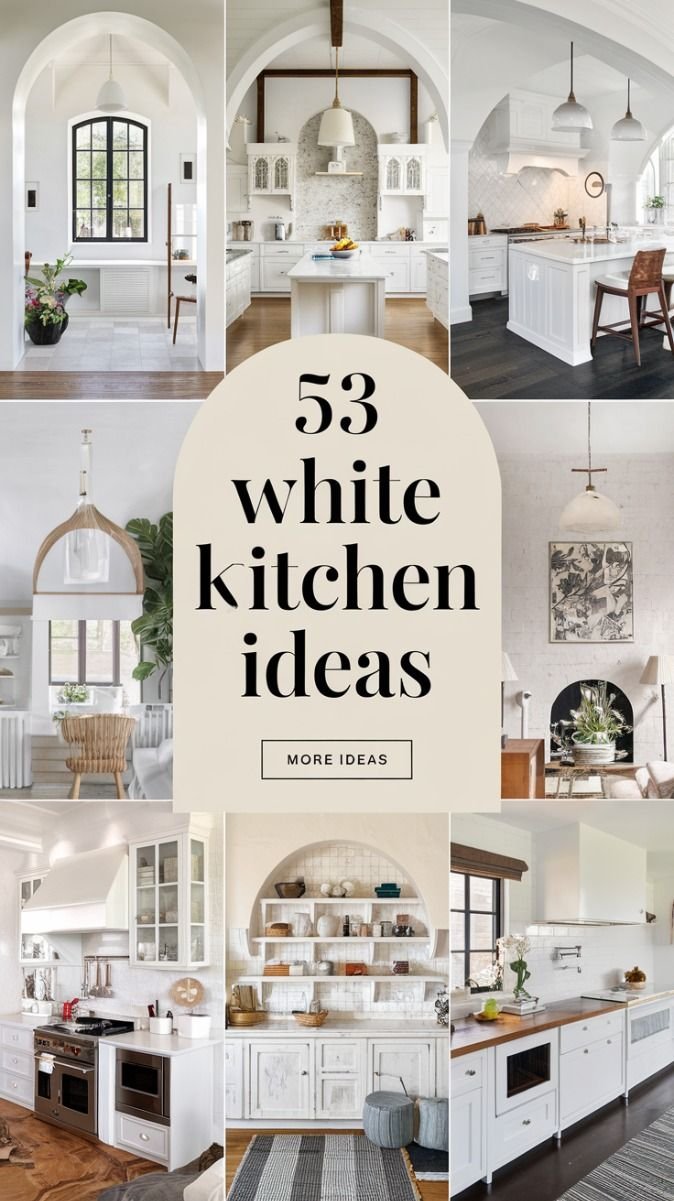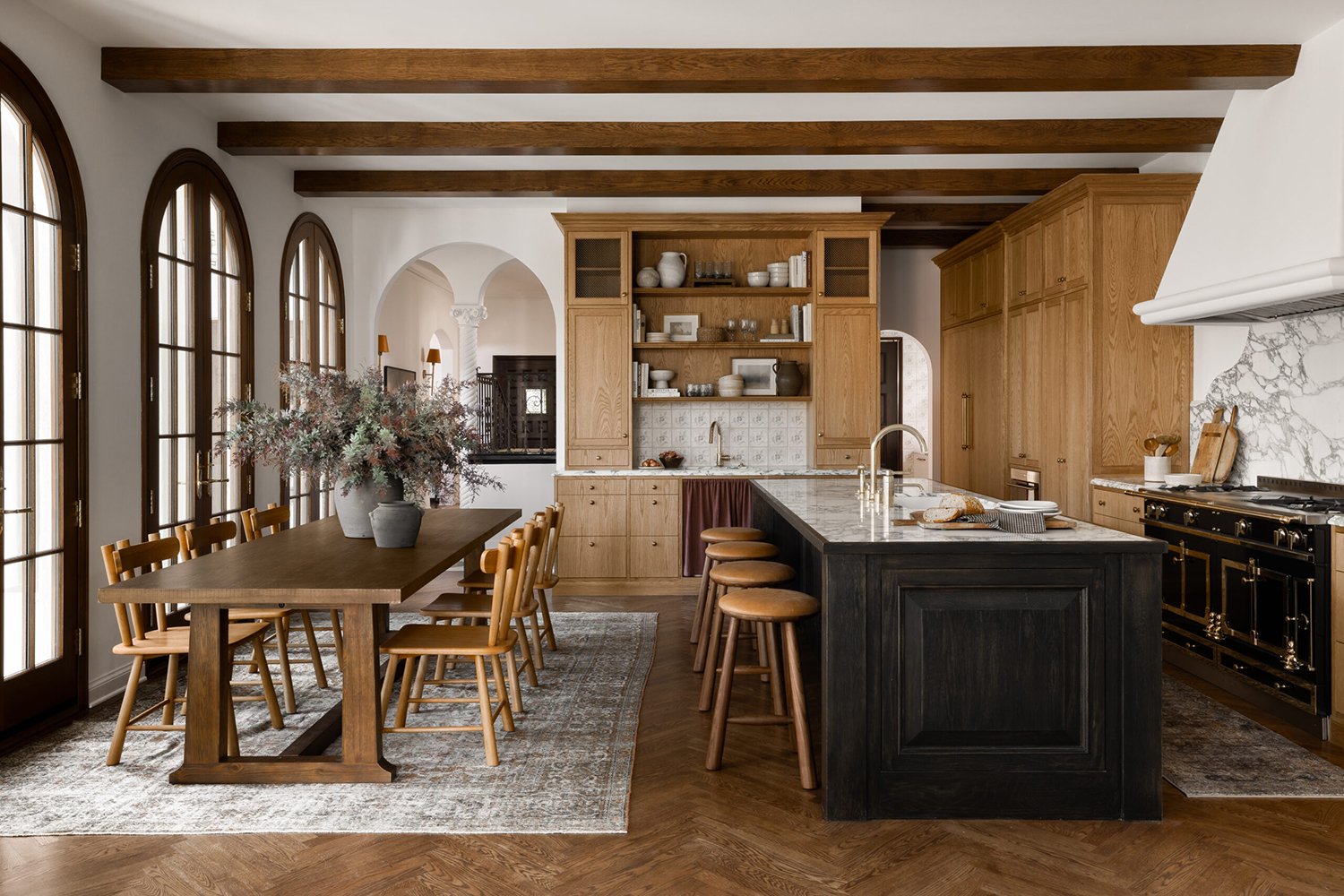Lighting can make or break your kitchen’s functionality and style. Whether you’re cooking, entertaining, or simply enjoying your morning coffee, the right kitchen lighting sets the mood and enhances every experience. According to industry pros, proper lighting isn’t just about visibility—it’s about layering, efficiency, and design.
In this guide, we’ll explore expert-recommended kitchen lighting tips, including how to use various light types, what fixtures work best for different zones, and the latest trends in the world of modern kitchen lighting.
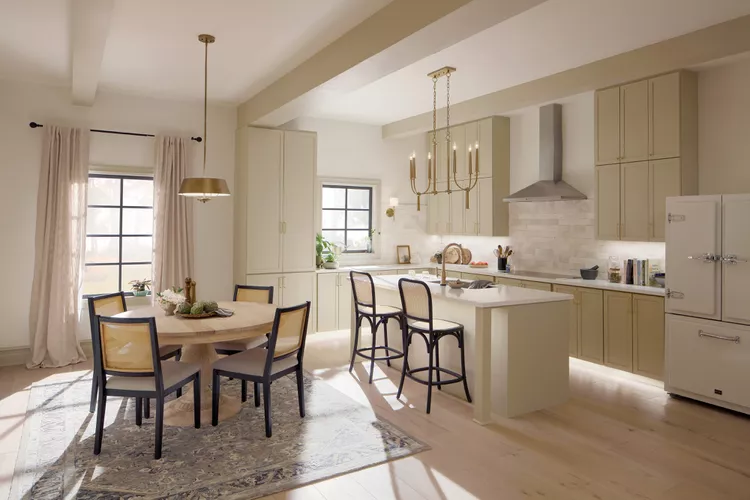
Why Kitchen Lighting Matters
The kitchen is no longer just a cooking area—it’s the heart of the home. Good kitchen lighting does more than brighten the room; it enhances workflow, adds ambiance, and increases your home’s value.
Industry pros recommend designing your lighting plan around three core types: ambient lighting, task lighting, and accent lighting. Together, these layers create a balanced and functional space.
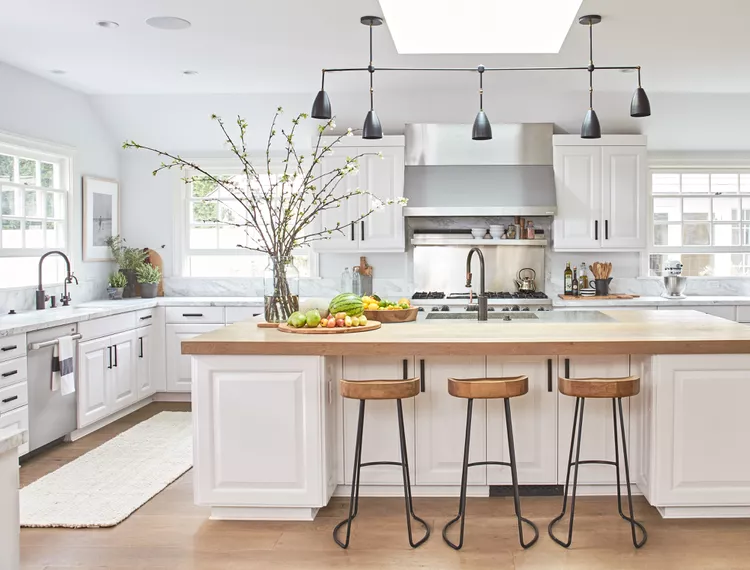
1. Plan for Layered Lighting
Layered lighting is the golden rule in kitchen design. Experts stress the importance of combining ambient, task, and accent lighting for maximum comfort and efficiency.
- Ambient lighting provides overall illumination. This could come from kitchen ceiling lights or recessed lighting.
- Task lighting focuses on work zones like countertops, sinks, and stoves. Under cabinet lighting is a favorite for this.
- Accent lighting adds visual interest—think pendant lights over a kitchen island or decorative lights inside glass cabinets.
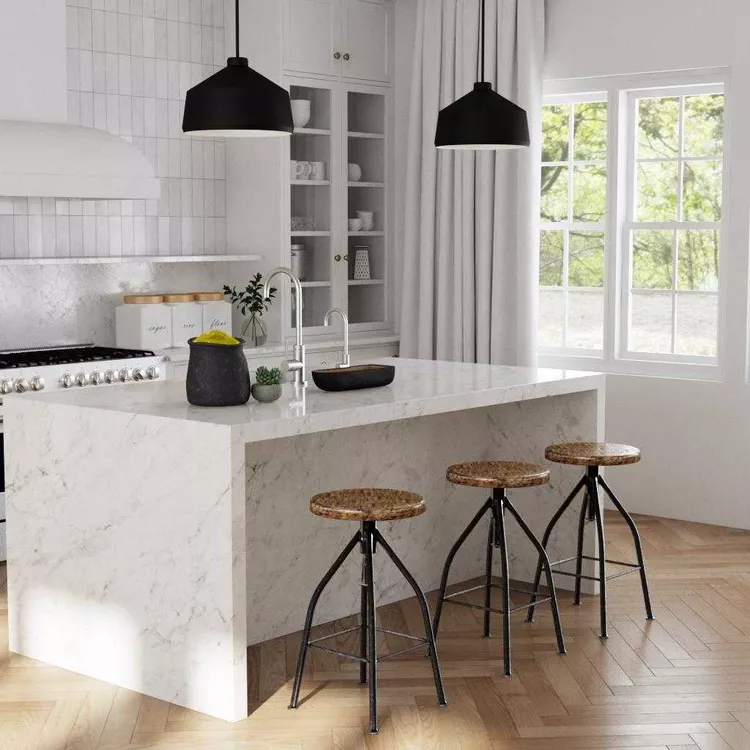
2. Choose the Right Fixtures
Selecting the appropriate kitchen light fixtures for each lighting layer ensures functionality and visual appeal.
- Pendant lights for kitchen islands add style and practical light.
- Recessed lighting for kitchen ceilings provides seamless, general illumination.
- LED kitchen lights are energy-efficient and long-lasting.
- For a charming rustic touch, farmhouse kitchen lighting combines vintage style with modern utility.
Lighting should not only serve its purpose but also enhance the overall design of your kitchen, whether you prefer industrial, contemporary, or open-concept lighting styles.
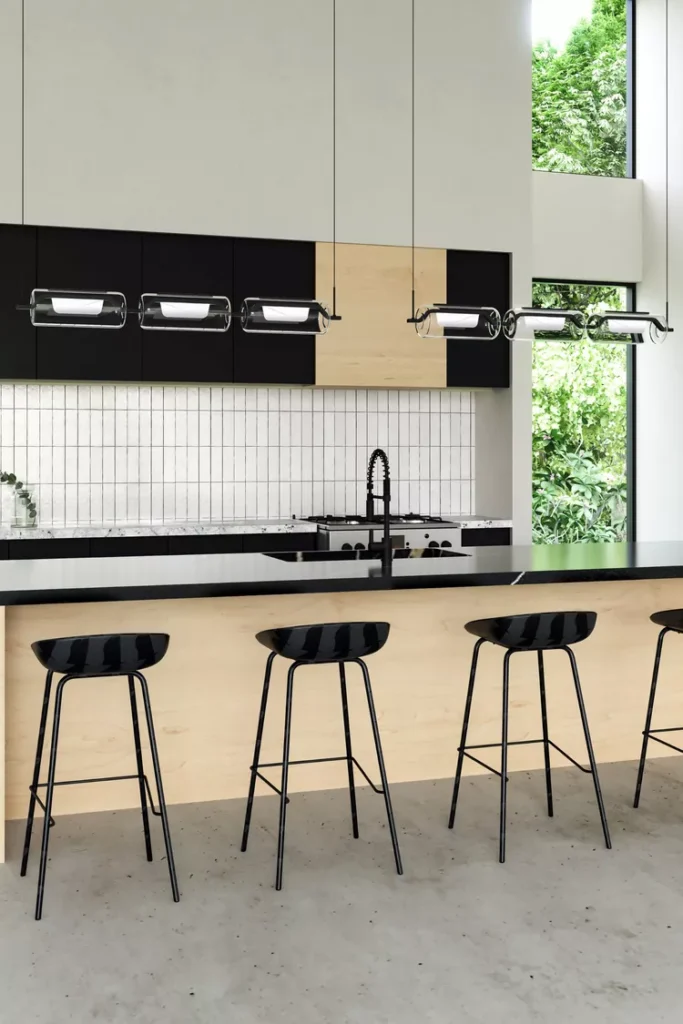
3. Highlight Work Areas with Task Lighting
Cooking and prepping demand clear visibility. Task lighting ensures your chopping, mixing, and reading recipes is safe and easy.
Install under cabinet lighting to eliminate shadows on your countertops. If you have a kitchen island, consider low-hanging pendant lights to illuminate meal prep areas without creating glare.
Pros also recommend dimmable lights to adjust brightness based on time of day or activity, enhancing both practicality and ambiance.
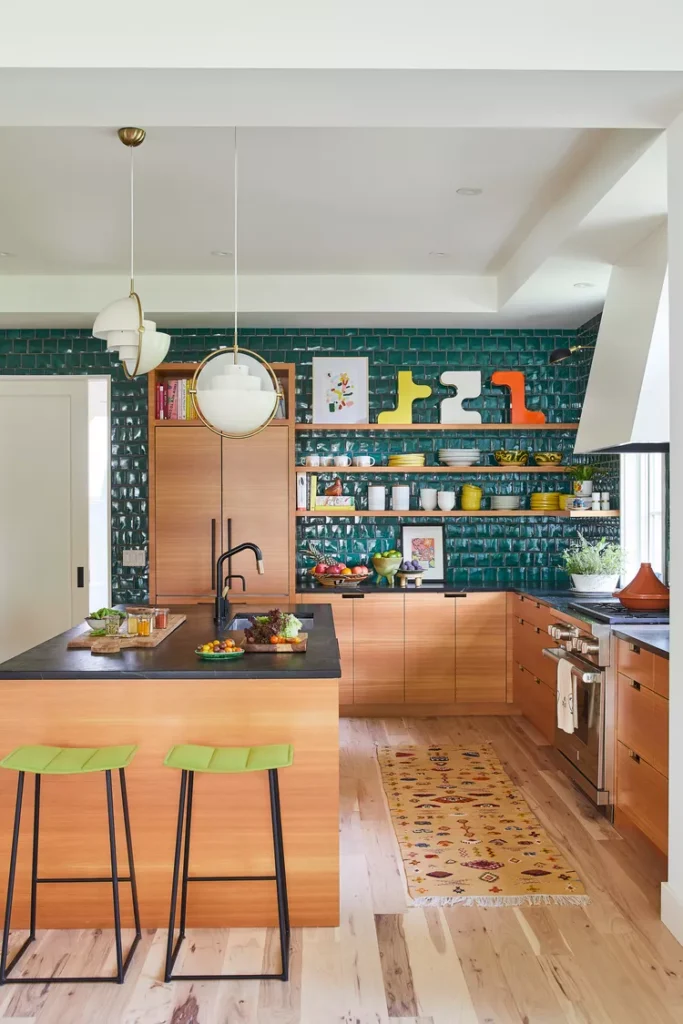
4. Embrace LED and Smart Lighting Solutions
Today’s homeowners are looking for energy-efficient lighting that saves money and supports sustainable living. That’s where LED kitchen lights come in—they last longer, consume less power, and produce less heat than traditional bulbs.
Take it a step further with smart lighting. From app-controlled brightness to motion sensors, smart fixtures bring flexibility and convenience to your kitchen routine.
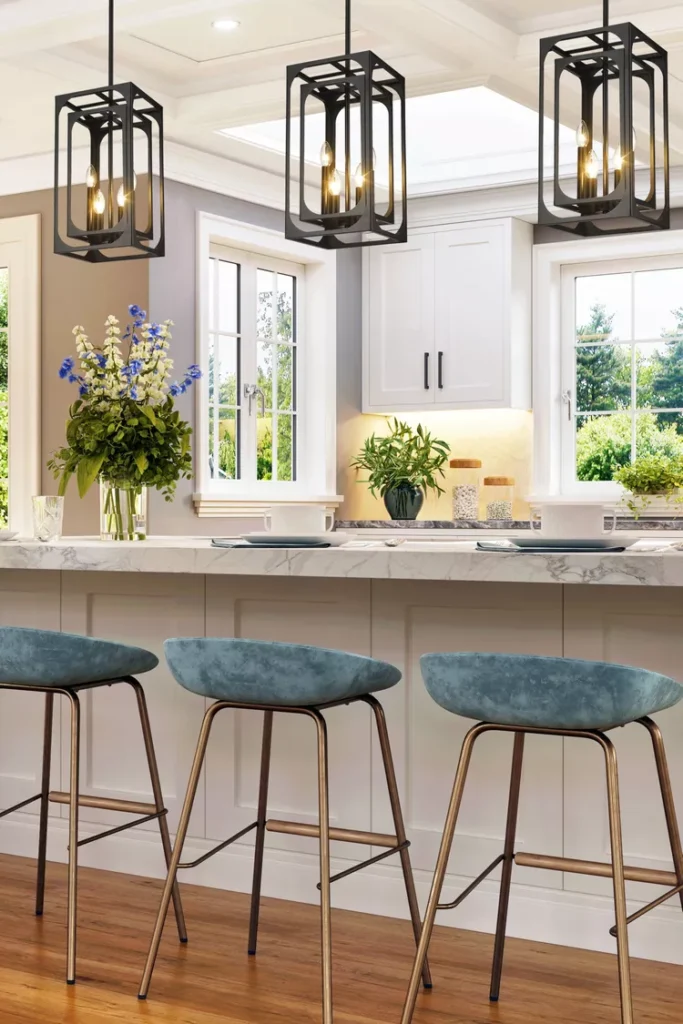
5. Don’t Forget the Island
The kitchen island is a central hub for cooking, socializing, and dining, which makes its lighting especially important.
Use kitchen island lighting to define this space. A trio of pendant lights is both a practical and aesthetic choice, offering symmetry and focus. Choose styles that align with your decor—modern, farmhouse, or industrial kitchen lighting all work beautifully depending on your taste.
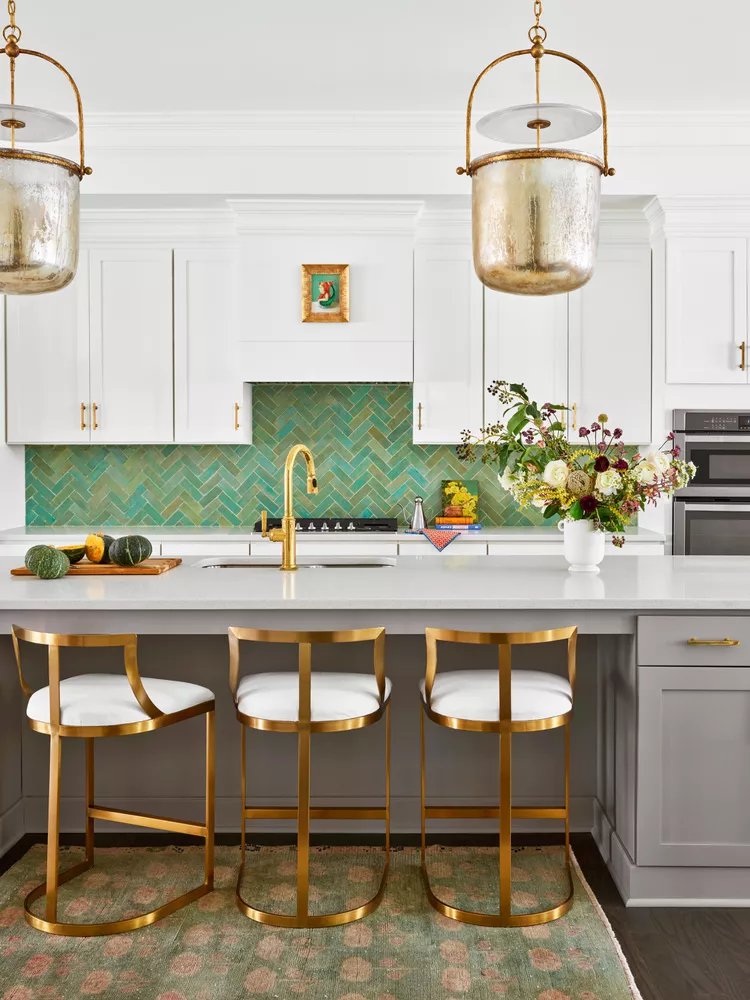
6. Use Lighting to Complement Natural Light
If your kitchen has windows or skylights, make the most of natural light integration during the day. Then supplement with artificial lights in the evening.
Position recessed lighting strategically to fill in shadows without competing with daylight. For kitchens with limited natural light, choose bright, reflective fixtures and surfaces to amplify brightness.
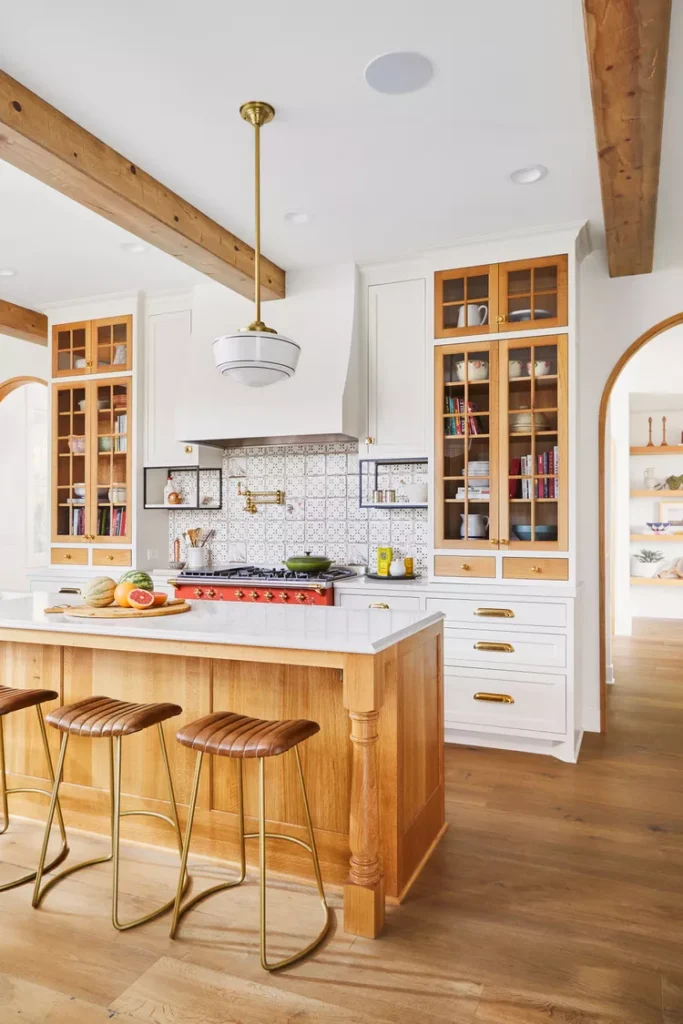
7. Add a Decorative Touch
Beyond function, lighting is a powerful design tool. Use it to express your personality and style.
Decorative lights like chandeliers, globe pendants, or artistic sconces can act as focal points. For a clean, sleek vibe, go with contemporary lighting elements that feature clean lines and minimalist forms.
What Is a Dirty Kitchen? Outdoor dirty kitchen design
Industry professionals often use lighting to tie together design themes—whether it’s a farmhouse kitchen, a modern space, or a cozy open-concept kitchen.
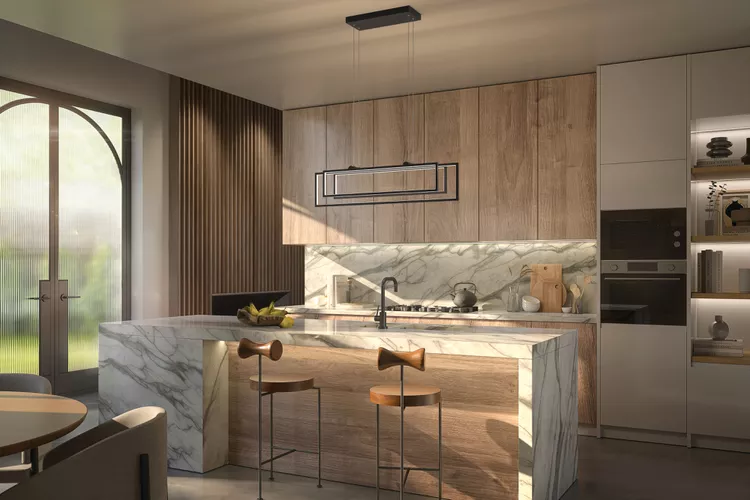
8. Keep Up with Kitchen Lighting Trends
Staying current with kitchen lighting trends ensures your space feels fresh and timeless.
In 2025, designers are favoring:
- Smart lighting systems with voice and app integration.
- Mixed materials like glass, metal, and wood in light fixtures.
- Dimmable LED lights that offer energy savings and flexibility.
- Bold accent lighting for open shelving and decorative corners.
These elements don’t just serve a purpose—they elevate your entire kitchen aesthetic.
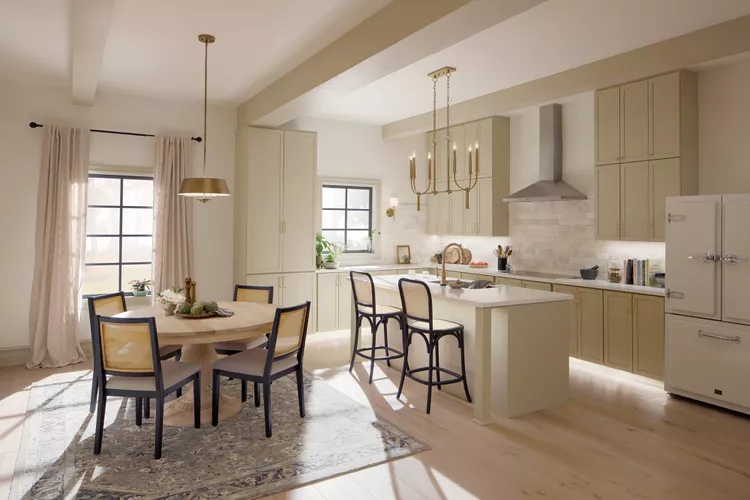
9. Customize for Your Layout
Every kitchen is unique, so your lighting layout for kitchen spaces should reflect that. Long, narrow kitchens benefit from evenly spaced ceiling lights, while L-shaped or open-plan kitchens may need more localized fixtures.
If you have high ceilings, go bold with larger pendants or chandeliers. For smaller spaces, consider low-profile LED fixtures or track lighting to conserve space.
10. Consult a Professional
While DIY lighting upgrades are common, consulting a designer or electrician ensures safety and precision. Industry professionals can create a layered lighting design plan tailored to your kitchen’s architecture and your lifestyle.
They’ll also ensure you meet electrical codes and avoid common mistakes like over-lighting or under-lighting key areas.
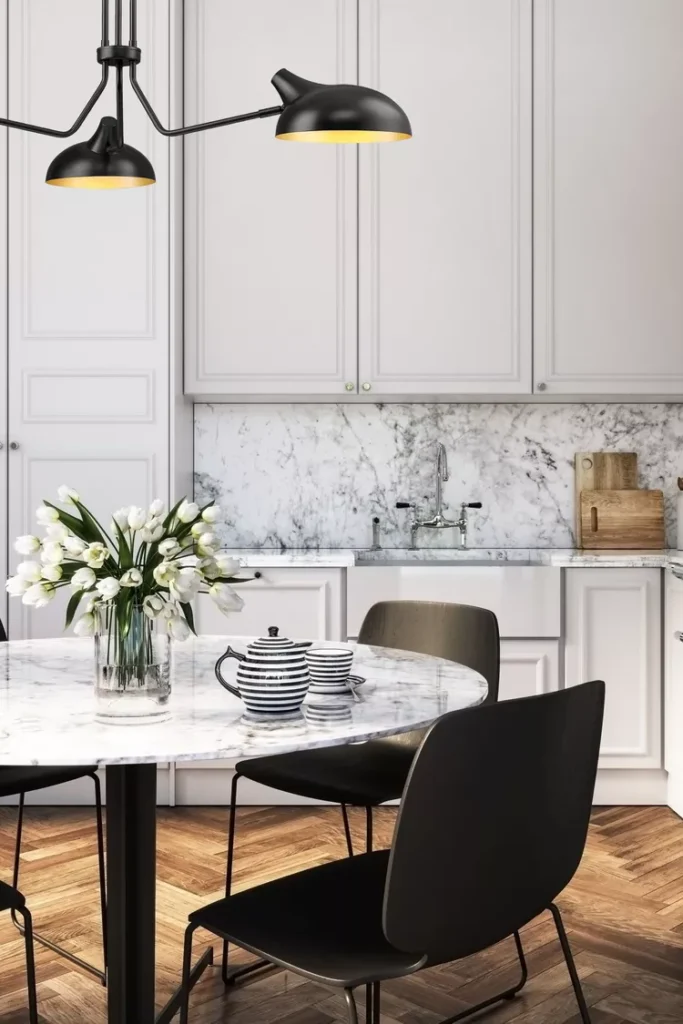
Final Thoughts
Well-planned kitchen lighting transforms a space from ordinary to extraordinary. Whether you’re redesigning your entire kitchen or simply replacing outdated light fixtures, keep these expert-approved tips in mind.
By combining ambient, task, and accent lighting, using energy-efficient options like LEDs, and keeping up with modern kitchen lighting trends, you’ll create a beautiful and functional space that shines in every way.
